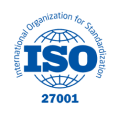

How to conduct an effective needs assessment to avoid CRM redesign?
The introduction of a new IT project, especially a CRM (Customer Relationship Management) or its further development, is always an exciting challenge for both the customer and the developer. As a rule, the goal of development is not only to support business processes and facilitate operational work, but also to help decision makers with relevant and accurate data.
The introduction of a new IT project, especially a CRM (Customer Relationship Management) or its further development, is always an exciting challenge for both the customer and the developer. As a rule, the goal of development is not only to support business processes and facilitate operational work, but also to help decision makers with relevant and accurate data.
Still, in many projects, management is faced with the fact that months after sharpening, certain data are missing, reports are not usable, and the information required for decisions, is still not extracted from the system. All this requires further development, which entails a significant expenditure of resources: time, money, people, energy. Such unpleasant surprises can typically be traced back to shortcomings and errors in the needs assessment process.
During the needs assessment, a project team tasked with CRM implementation can run into the following difficulties.
- Only operational teams are consulted— management expectations are missed, so reports will be incomplete.
- The data structure is not precisely defined- later it turns out that certain data is missing, so business processes, automations, reports cannot be built on it, so the final result is not good.
- Little attention paid to data quality— reports are generated that are useless due to incomplete or inaccurate data, so data cleaning is a constant burden on the company.
- No thoughtful concept— the data is inside the system but not available in the right quantity, quality and format.
So the question is: how can we avoid these problems? How to ensure that your CRM system is Salesforce, or any other service provider — provide adequate data to all data subjects? The solution is simpler than we think: the needs assessment must be started on time and it must begin with a clear understanding of the expectations of the managers.
Let's see, step by step, how to guarantee a successful assessment of needs!
- THE STARTING POINT OF A SUCCESSFUL NEEDS ASSESSMENT IS AN ACCURATE UNDERSTANDING OF THE EXPECTATIONS OF MANAGERS
Why start with management?
One of the most common mistakes that we can make in a CRM development project is to start exclusively with the operational teams to assess the needs, collect them and, let's face it, it is the characteristic methodology. Of course, it is important to understand what customer data salespeople want to see in the system, what business processes need to be mapped in the system for customer service, what campaigns marketing plans to implement and we could continue the line... but if we do not see the whole picture — that is, that ultimately, at the very end of the process, management will use the operational processes through data recorded and reports generated from the data to make their business decisions — then subsequent modifications and redesigns.
Since management is responsible for strategic decisions, which of course require reports and analysis, it is an essential step to clarify and understand their expectations already at the planning stage, in a timely manner. Otherwise, it is easy to find that the CRM will not provide the data they need to manage the company.
Therefore, already at the very beginning of the design of the system, it is advisable to formulate the following questions for management:
- What key business decisions does management make based on CRM data?
- What KPIs and reports are needed at different management levels?
- In what form and frequency should the data be available?
- What kind of reports are you currently working with, for what purpose are they used?
- What are the reports that are fit for purpose and where do you find shortcomings in use?
These questions help clarify what type and amount of data we will need in the design and development of the system and how we should structure it. In essence, the above questions must first be answered exactly, and only then should we start with a detailed mapping of operational needs.
- The relationship between data and reports
A report, or even a system, is only as good as the quality and quantity of data available. If the data structure and data quality are not adequate, then the reports will not be reliable, and in the end we will not be able to support management decision-making well. In addition, the emergence of digitalization and artificial intelligence is having an increasing impact on business processes, the ability to think ahead opens the door to take advantage of emerging solutions through innovation. That is why it is important to consider the possibilities of data-driven decision making and the requirements necessary to support decision-making already when designing a CRM.
During the project, the following aspects are therefore recommended to be taken into account in the planning, survey and analysis phase:
- support for data-driven decision making
- Exploitation of technological capability
- identification of data collection processes and sources
- ensuring data quality and validation
- data migration and exploring possibilities for data integration
- support performance measurement of business areas and communication channels
- support for data-driven decision making
An important question is also what kind of data we might need when developing a system.
Let's see, without going into detail, what areas of data can typically be affected by the mapping of a sales process, for example!
Customer data
- company data
- Industry Data
- financial data
- First and third party data
- intend data
- Segmentation and customer rating data
Contact details
- Position and role of decision makers
- availabilities
- Preferred communication channels
Sales data
- data of interest
- data to be extracted from business opportunities - Pipeline
- offers and contracts
- data related to the products sold
- Revenue related data
Marketing data
- data to be extracted from planned campaigns
- data related to the products sold
- Revenue related data
Customer Service Data
- Contact center measurement data, performance indicators
- data related to complaints
- performance indicators of other services
Special data for business areas
- different data from company to company and area different data depending on the need and purpose of the data development
- Designing reports and dashboards
Reports and dashboards should therefore be defined at the initial stage of the project taking into account the above data types, because they help to determine what data should be recorded (collected) after the system is set up, during operation, and in what form and structure it should be stored. Not to mention that the information obtained in this way also has an impact on the further planning stages of the development, since it basically determines what additional data is needed in addition to the must-have data for the operational activity, which additional data is needed to measure the performance indicators.
During the planning of the report, it is worth asking the following questions at the different levels of management:
- What are the criteria for measuring success/result?
- What key KPIs should you pay attention to?
- What are the metrics that support decision making?
- Who will use the reports?
- Do you need static or dynamic reports?
- How often should reports be updated?
- What visualization tools will management prefer?
If these issues are not clarified at the very beginning of the project, then most of the time only at the end of the development, or worse, after sharpening, it will be possible to find out to what extent the implementation can support decision-making, whether it is necessary to redesign the delivered work.
So the next time you're planning an IT project or conducting a needs assessment, don't forget: first ask your managers what business decisions the system needs to provide an effective background for!
We at United Consult have extensive experience in IT development and CRM implementations. We support our clients with expert background and special attention in the thorough mapping of needs, so that they can clearly define the expectations of middle and senior management towards the system at the very beginning of the project. This not only ensures long-term satisfaction, but also significantly reduces the need for subsequent development.
We also use our expertise to help ensure that, as a result of a successful needs assessment, the system effectively supports the coordination and automation of business processes. Thus, CRM will not only become a data collection platform, but will create real business value that will contribute to the growth and efficiency of the company.
UC CRM Solution Zrt., a key partner of the world's leading CRM solution. In recognition of our commitment and success to date, we were awarded the highest level consulting partner degree in 2024. In addition, in the emerging markets of the EMEA, covering 26 countries, the Implementation Partner of the Year AwardThey also honored us.
Author: Szekér Viktória
















